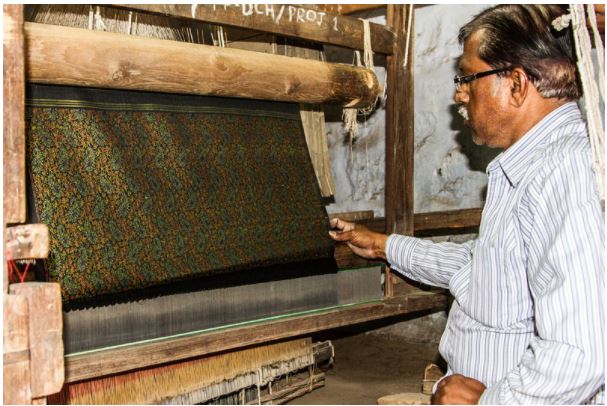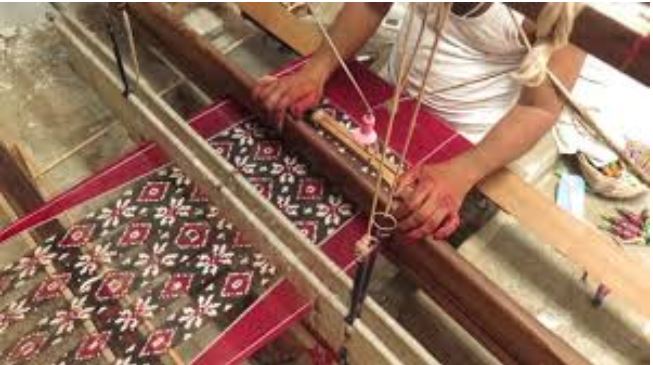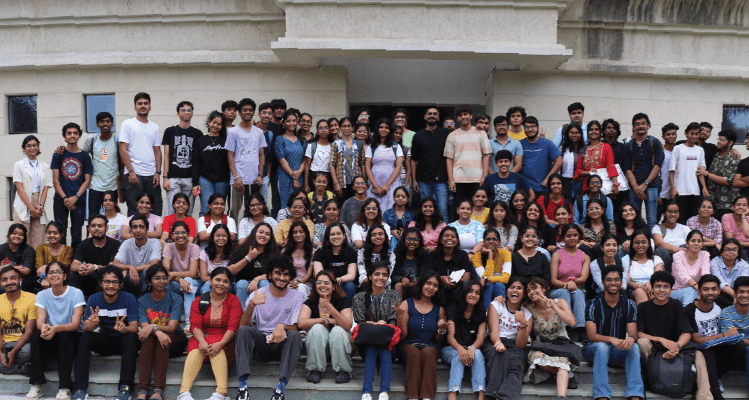When the history of India’s crafts and textiles is written, it will speak of treasures that once occupied a pride of place in the lives of royalty. These are lost in the annals of time, fighting to survive the dynamics of the contemporary marketplace. However, fashion design new trends are solicited, the history of fashion and tradition are re-emerging and worth discussing.
Himroo
Himroo fabric is made of silk and cotton and this weave of paisleys was brought to Aurangabad during the reign of Mohammad Tughlaq, when he moved his capital from Delhi to Daulat Abad, Aurangabad. The term himroo originated from the Persian word ‘Hum Dhalapathar-ruh’, meaning ‘similar’ and is a replication of Kum-khwab, a rich textured fabric woven with golden and silver threads and meant for the royal families in the olden days.

Telia Rumal
Literally: “oiled squares or handkerchiefs”. The fabric is soaked in a mixture of oil and castor ash for a couple of weeks. Then the parts to be left in the base color (usually white) are tied. The fabric is dipped in one color in a natural dye. Then the process is repeated, as in all tie-dyed fabrics, till the pattern emerges. These are square ikat cloths used as headscarves by Muslim men. Woven in Andhra Pradesh. These were originally in cotton and were much prized in many African communities. The rumal pattern of squares was later adopted in the ikat silk sarees of Andhra Pradesh through the initiative of Kamala Chattopadhyay.4 Today the silk Telia Rumal ikat sarees from Andhra Pradesh are making a great comeback with the dramatic patterning in mainly black, red, and white.

Kharad
The nomadic looms of Kutch have woven camel, goat, and sheep wool rugs in the traditional form for years. Carrying motifs from the nomadic life of weaver-tribesmen, these rugs are dyed with natural dyes and can last up to 100 years.
Only two families are today practicing this rich craft of kharad rug weaving, which historically enjoyed royal patronage from Kings and Ministers of Sindh and Gujarat. While several members of the tribe carry the knowledge of this wonderful craft, the lack of due appreciation in the marketplace has forced them into alternative means of livelihood. Khamir works with these artisans and is facilitating market linkages to connect the artisans to various entrepreneurs.

Dongria
A rare collectors’ textile, women of the Dongria Kondh community, a hill tribe in Odisha, embroider their creation myth of Niyamraja on thick handwoven cotton shawls in bright vivid colors depicting their dongars (hills) and fields. They believe in giving back to nature as much as they take from it. These shawls are usually made for their personal use and rarely sold outside the tribe.

Dhalapathar
The Dhalapathar offered the most exquisite hand woven tapestries in cotton. Even 20 years ago every Odia household displayed Dhalapathar proudly. Today, there are only two weavers left in Odisha who know this rare weave.

Rupal Joshi
